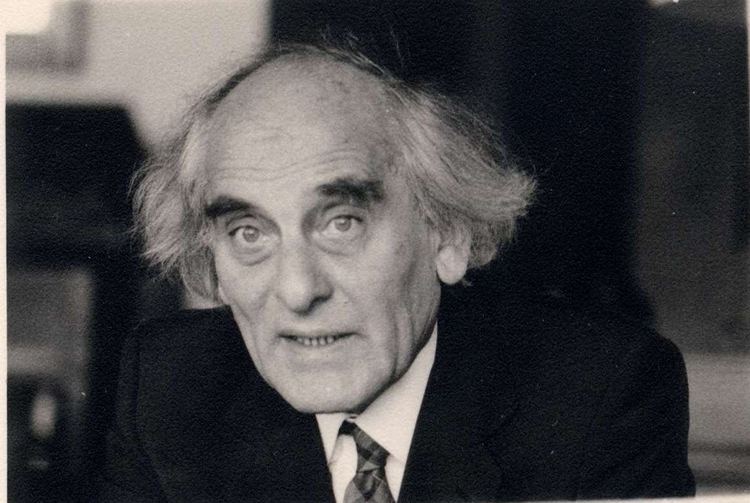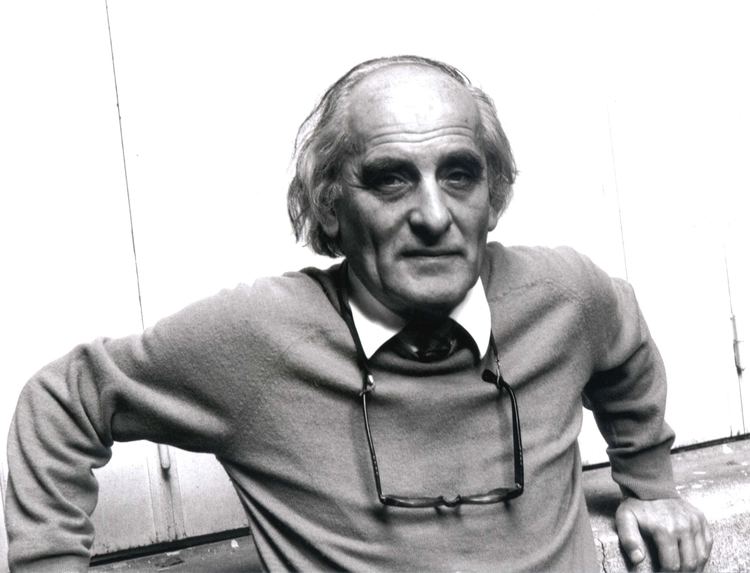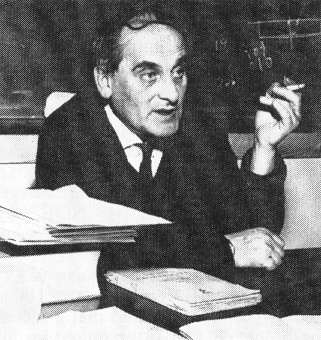Name Giuseppe Occhialini | Education University of Florence Role Physicist | |
 | ||
Died December 30, 1993, Paris, France | ||
sp16l024 giuseppe occhialini lo scienziato di fossombrone
Giuseppe Paolo Stanislao "Beppo" Occhialini ForMemRS ([dʒuˈzɛppe okkjaˈliːni]; 5 December 1907 – 30 December 1993) was an Italian physicist, who contributed to the discovery of the pion or pi-meson decay in 1947, with César Lattes and Cecil Frank Powell (Nobel Prize for Physics). At the time of this discovery, they were all working at the H. H. Wills Laboratory of the University of Bristol.
Contents
- sp16l024 giuseppe occhialini lo scienziato di fossombrone
- Giuseppe Occhialini Wikipedia audio article
- Biography
- Honors
- Recreations
- References

The X-ray satellite SAX was named BeppoSAX in his honour after its launch in 1996.

Giuseppe Occhialini | Wikipedia audio article
Biography

His father was the physicist Raffaele Augusto Occhialini (1878–1951), pioneer in the fields of spectroscopy and electronics theory. Giuseppe Paolo Stanislao Occhialini graduated at Florence in 1929. In 1932, he collaborated in the discovery of the positron in cosmic rays at the Cavendish Laboratory of Cambridge, under the leadership of Patrick Blackett, using cloud chambers. From 1937 to the 1944 he worked, on invitation of Gleb Wataghin, at the institute of physics of the University of São Paulo, in Brazil. He returned to Italy, in 1944, taught first in Genoa (1950) and then in Milan (1952).
In 1947 he contributed to the discovery of the pion or pi-meson decay in collaboration with César Lattes and Cecil Frank Powell. The discovery was made at the Wills Laboratory of Bristol using the technology of the tracks on specialized photographic emulsions.
He was a protagonist in cosmic ray research with the nuclear utilization of photographic emulsions exposed to high energy cosmic radiation, work which culminated in 1954 with the European G-Stack collaboration. Later on with the coming of particle accelerators, Occhialini explored that new field of research. He also made outstanding contributions to space physics, importantly contributing to the foundation of the European Space Agency.
Honors
Recreations
Beppo Occhialini was an avid mountain climber. During WW II, staying in Brazil, then a country hostile to Italy, he became an authorized alpine guide in the Parque Nacional do Itatiaia, where there is a peak named "Pico Occhialini".
